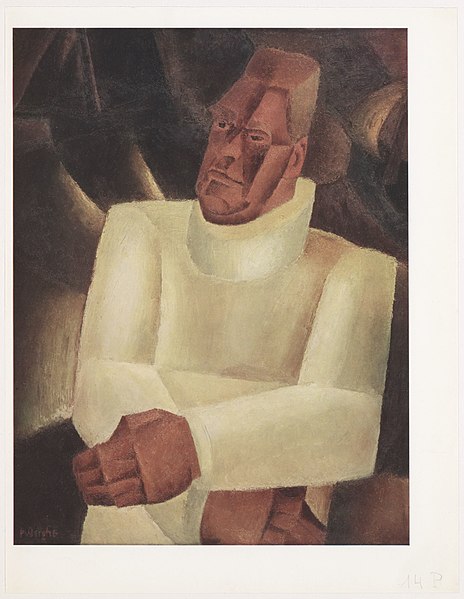Flemish Expressionism, also referred to as Belgian Expressionism, was one of the dominant art styles in Flanders during the interbellum. Influenced by artists like James Ensor and the early works of Vincent van Gogh, it was a distinct contemporary of German Expressionism. Contrary to the more rebellious and erotic nature of many German Expressionist works, the Flemish art of the School of Latem was more oriented towards the farming life, and was expressed in earthy colours and vigorous brushwork. It was also in general more oriented towards France and Brussels than to Germany, and incorporated elements of Fauvism and Cubism, for example the interest in "primitive" art, of both the ethnic and folk traditions. Flemish Expressionists like Spilliaert were more influenced by Ensor and Symbolism, or like Wouters were closer to the vibrant colours used by the Fauvists. The main proponents were Gust De Smet, Constant Permeke and Frits Van den Berghe.

Frits Van den Berghe, The idiot by the river, 1926, Museum of Fine Arts, Ghent
Gustave De Smet, The Good House, 1926, Museum of Fine Arts, Ghent
Gustave Van de Woestijne, Fuga, 1925, Museum of Fine Arts, Ghent
Léon Spilliaert, Landscape with red roof, 1926, Mu.ZEE in Ostend
Constant Permeke was a Belgian painter and sculptor who is considered the leading figure of Flemish Expressionism.
Constant Permeke (1886–1952); painter, draftsman, sculptor, by Frits Van den Berghe, collection Felixarchief
Niobe, sculpture park Kröller-Müller Museum
Motherhood (woman from Oostende) (1913)
Ostend harbour








